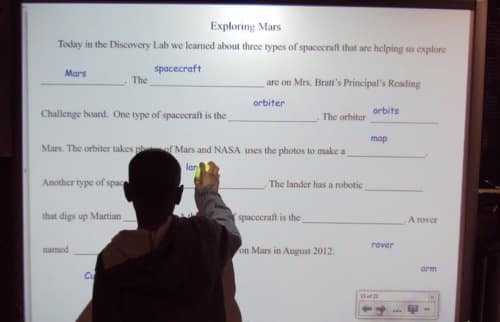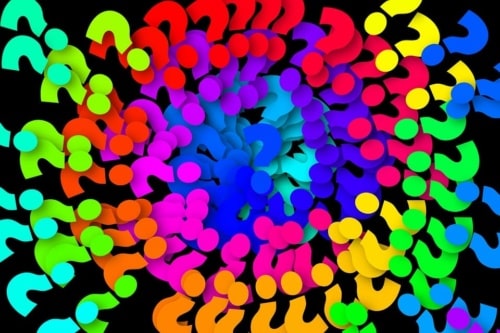Sentence Diagramming Helps ELLs Achieve by Joy Lin
 As someone who did not grow up with English as my first language, I always found it particularly difficult to read science articles and textbooks. Usually, the text included so much technical vocabulary and jargon that I was overwhelmed by the number of new words I had to stop and look up; oftentimes I would have trouble understanding entire sentences if they contained multiple unknown words or phrases. Looking back, reading would have been much easier if I had the skills to break down sentence structures in order to identify the key nouns and verbs. Sentence diagramming is a pedagogical approach that guides students through complex sentences, breaking them up into more manageable pieces that help students understand the meaning of specific words. In science courses, much of the vocabulary is unfamiliar as most people do not encounter it in their day-to-day interactions, which could lead to higher levels of confusion and misunderstanding, especially for English Language Learners (ELL).
As someone who did not grow up with English as my first language, I always found it particularly difficult to read science articles and textbooks. Usually, the text included so much technical vocabulary and jargon that I was overwhelmed by the number of new words I had to stop and look up; oftentimes I would have trouble understanding entire sentences if they contained multiple unknown words or phrases. Looking back, reading would have been much easier if I had the skills to break down sentence structures in order to identify the key nouns and verbs. Sentence diagramming is a pedagogical approach that guides students through complex sentences, breaking them up into more manageable pieces that help students understand the meaning of specific words. In science courses, much of the vocabulary is unfamiliar as most people do not encounter it in their day-to-day interactions, which could lead to higher levels of confusion and misunderstanding, especially for English Language Learners (ELL).
 In order for students in Texas to graduate, they are required to pass a biology end-of-course exam. Throughout this course, students study living organisms which includes subjects like anatomy, behavior, and interaction. The amount of reading required to learn this information is staggering, and test questions are often long sentences describing different scenarios the students would have to navigate through to provide a correct answer. For students not yet proficient in the English language or content, this can act as a roadblock and hinder their success.
In order for students in Texas to graduate, they are required to pass a biology end-of-course exam. Throughout this course, students study living organisms which includes subjects like anatomy, behavior, and interaction. The amount of reading required to learn this information is staggering, and test questions are often long sentences describing different scenarios the students would have to navigate through to provide a correct answer. For students not yet proficient in the English language or content, this can act as a roadblock and hinder their success.
In addition, students also need chemistry as a science credit to graduate. In chemistry, students are asked to handle chemicals in labs and perform mathematical calculations based on their findings. Another example highlighting the importance of reading comprehension stems from science labs and projects, where a lack of English literacy can become physically dangerous. Students handling hazardous chemicals in class put everyone at risk if they do not have the ability to fully comprehend the warnings and precautions. Additional risks could arise if they misread the manual for sensitive equipment or the steps to perform a lab. If safety procedures are not followed, students could get hurt. It is crucial then that all students be properly prepared in case of accidents on how to use the eyewash station, fire blankets, and other precautionary items.
 Students encounter similar comprehension issues in other science courses, including physics, geology, aquatic science, and astronomy. Upon learning a long list of new vocabulary words, they must read and understand articles using these new terms. Too often, students give up as soon as they see test questions in paragraph form because the process of making sense of it all is too discouraging. If we were to teach them how to break down each question in order to get to the main point, it would make the process more tolerable for those who struggle with the English language and could lead to higher success rates. As previously stated, sentence diagramming is an approach to teaching and learning that helps readers overcome literacy challenges by understanding the main point each sentence is trying to convey, especially in vocabulary-riddled text.
Students encounter similar comprehension issues in other science courses, including physics, geology, aquatic science, and astronomy. Upon learning a long list of new vocabulary words, they must read and understand articles using these new terms. Too often, students give up as soon as they see test questions in paragraph form because the process of making sense of it all is too discouraging. If we were to teach them how to break down each question in order to get to the main point, it would make the process more tolerable for those who struggle with the English language and could lead to higher success rates. As previously stated, sentence diagramming is an approach to teaching and learning that helps readers overcome literacy challenges by understanding the main point each sentence is trying to convey, especially in vocabulary-riddled text.
Author
 Joy Lin attended the University of Texas in Austin at 15 and graduated with 3 degrees by the age of 21. She has been teaching in Austin Independent School District ever since. In 2012, she was named one of 18 most inspiring educators by TED.com, which hosts TED Talks among other projects. TED was so impressed with her; they funded a six-part animated series “If Superpowers Were Real.” The animated series premiered in 2013 on TED.Ed and received international media attention from BBC, FOX, KUT, Time Warner Cable News, and over 100 websites.
Joy Lin attended the University of Texas in Austin at 15 and graduated with 3 degrees by the age of 21. She has been teaching in Austin Independent School District ever since. In 2012, she was named one of 18 most inspiring educators by TED.com, which hosts TED Talks among other projects. TED was so impressed with her; they funded a six-part animated series “If Superpowers Were Real.” The animated series premiered in 2013 on TED.Ed and received international media attention from BBC, FOX, KUT, Time Warner Cable News, and over 100 websites.
The following year, Joy was named “Innovator of the Year” By Texas Classroom Teachers Association. In 2014, Joy started hosting Comic-Con panels in various cities, including Las Vegas Wizard World Comic Con, Texas Comic-Con, and the San Diego International Comic-Con. Having started in February 2015 as a stand-up comedian, Joy has performed at the 2015 Sacramento Comedy Festival, the 2016 NYC Crosstown Comedy Festival, and qualified as a quarterfinalist in the 2016 Funniest in South Texas contest.
Joy then transitioned to screenwriting/filmmaking and found immediate success with over 30 international and domestic film awards, including Winner of Independent Horror Movie Awards and Nominee of Paris Art and Movie Awards. Most recently, she became a published author with her book series “Superpower Science” via Hatchette Book Group, slated to release in 2018. Joy is currently an academic advisor to Sentence Analytics.
.
Further Reading
- edCircuit – Teaching Effective Communication
- TeachStarter – 7 Sensational Sentence Structure Resources and Activities
- ESL Collective – 35 FREE ESL sentence structure worksheets


